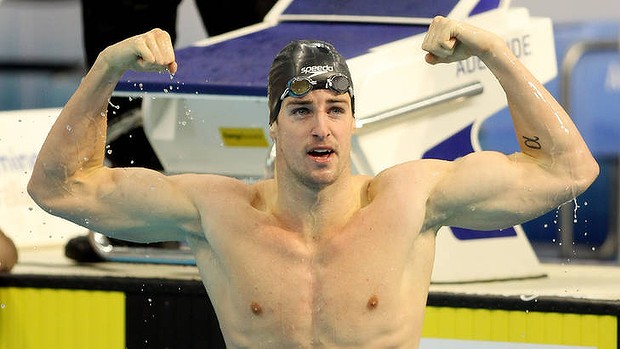We’re less than a week away from the London Olympic Games 2012 with the excitement building every day! Every four years, the Olympics give us sporting tragics a few weeks to indulge in the high drama and unpredictability of international sport. So what does it take to be an Olympian? World-class athletes are, by their very definition, a cut above others when it comes to their physical and sporting capacities. Though they may pull off seemingly supernatural feats, elite athletes are still human beings. The secret is in their preparation, in four years of hard work – work that goes on behind the scenes, away from the spotlight, in the early hours of the morning or late at night. So what can we learn from the training habits of the world’s best?

Combine strength training, metabolic conditioning, and skill development
James Magnussen: “We do seven pool sessions a week and two gym sessions. It may not be as much as other teams but we have a big emphasis on recovery and quality of training. My coach is very new age and focuses on more than just general fitness. After my success I think he’ll be a pioneer with this style of coaching.”
To prepare for peak performance, an athlete must train with multiple goals in mind. For example, a sprint swimming champion like James Magnussen must develop muscular power, appropriate metabolic conditioning (the capacity to produce energy quickly and economically), and efficient skill performance of the swimming stroke. To achieve these goals, his training is varied, which serves an additional purpose – training variety decreases the monotony that comes with “the same old program”.
The benefits of varied training are the same for the rest of us “mere mortals”! Combining multiple modes of training such as resistance training, cardio, and complex movement patterns means that your training targets improvements in:
- Biomechanical efficiency, achieved through increased effective muscle mass, increased joint range of motion, and improved coordination between “prime mover” muscle groups and stabilising muscles;
- Increased cardiorespiratory fitness level, meaning better heart and lung function, both of which are important variables for overall health, and
- Fundamental movement skill development, which results from improvements to limb coordination, balance, stability, and joint position sense.
On top of all the biological benefits of varied training, less training monotony is directly related to your motivation to train!
In a few days, we will bring you part 2 of this 5-part series, to further explore how your training can benefit from the same habits of elite athletes.
